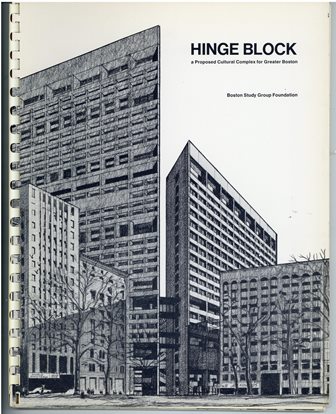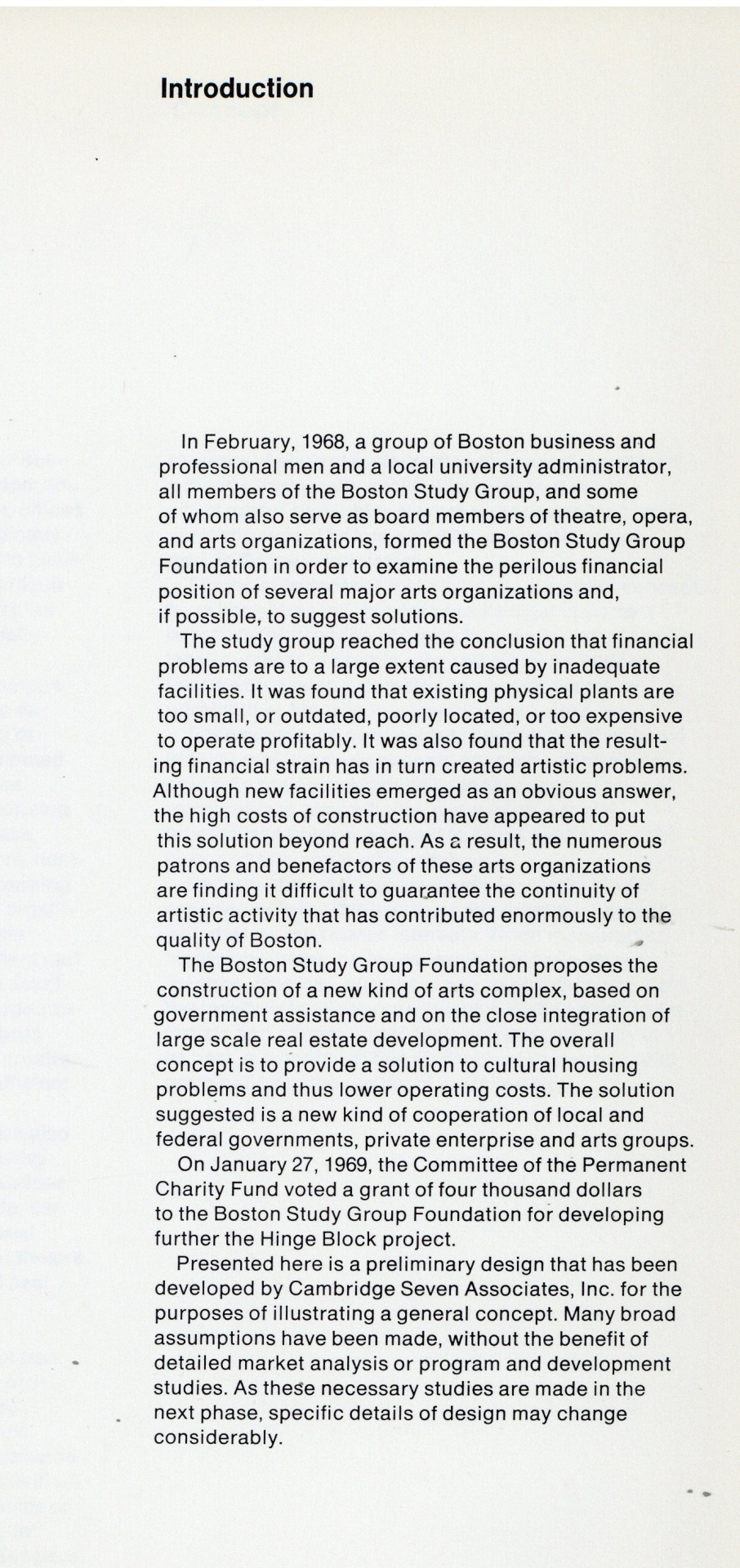Notes from the Archives: The Hinge Block
Today's Archives' blog post is a guest post by urban historian Max Grinnell. Max visited the City Archives a few weeks ago to look at some of our documents and dig into their history.
For most of human history, cities have not prioritized policies that provide areas specifically for the arts.
Today it seems like some cities can think of nothing else.
In Boston, formal planning for arts districts began in the middle of the 20th century. The variety of plans for the Hinge Block in Downtown Crossing/Chinatown area stand as a testimony to the interest in creating neighborhoods for the arts to flourish in the Hub.
I found the 1969 plan for the Hinge Block particularly intriguing because it was an attempt to make a commercially viable enterprise work alongside a sizable cultural performing arts center. As many Bostonians know, by the late 1960s, the adjacent retail area was known as the “Combat Zone.” “The Combat Zone” contained a variety of adult nightlife businesses that seemed incompatible with the refined and lively arts.
This plan is an interesting piece of Boston’s planning history. Planners eventually discarded this plan and ten different plans for the block would come and go through the 1970s, 1980s, and early 1990s. Today, the Hinge Block has been redeveloped as a commercial enterprise and is part of the general urban renaissance that has provided both challenges and opportunities for this corner of the City.
Max Grinnell teaches urban studies in Boston and Chicago. His writings on cities have appeared in the Boston Globe, the Chicago Tribune,the Guardian, and the Seattle Times and a host of other publications. His favorite streets for exploring and understanding Hub history include Mission Hill’s Wigglesworth Street and Neptune Road in East Boston. You can learn more about his professional work at www.theurbanologist.com.



